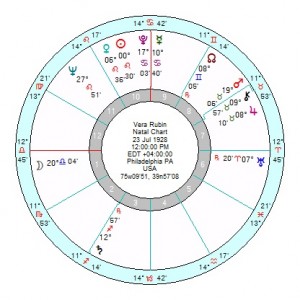Vera Rubin, the astronomer whose tireless stargazing provided the first confirmation for the existence of dark matter and paved the way for women in science, has died aged 88.
She was born in Philadelphia on 23 July 1928 with an electrical engineer father, also an amateur astrologer, who constructed her first telescope when she was 14. Despite great resistance from male-dominated science faculties, she persevered to become one of the foremost astronomers of her generation.
Her ground breaking discovery came from observing that the stars in the outer regions of a spiral galaxy were moving just as fast as the ones closer to the centre, apparently in defiance of Newton’s laws of motion, which predicted that the inner stars would be moving faster, just as the inner planets of the solar system are moving faster around the Sun than the outer planets. She and her partner concluded that the effect was real and must be the result of some inexplicable extra gravity, the only force that could account for such an observation. And wherever there is gravity, there must be mass. It was this missing mass — and its gravity — that was keeping these spinning galaxies glued together. [Times obit.]
She was a Sun Venus in Leo square Jupiter in Taurus, trine Uranus, so charming, stubborn, innovative. Her Mars in determined Taurus was also sextile Pluto (Mercury) in Cancer which would give her the grit to stand up to attacks within her profession. Her Mercury was in an inventive square to Uranus.
As expected her two strongest harmonics were the 13H, known for genius, exploration and breakthrough; and her leaving-a-legacy-for-history 17H. The harmonics do add an invaluable dimension to a chart, which on the surface might not look too unique.


Should have won a Nobel Prize. The discovery of Dark Matter is no small thing.